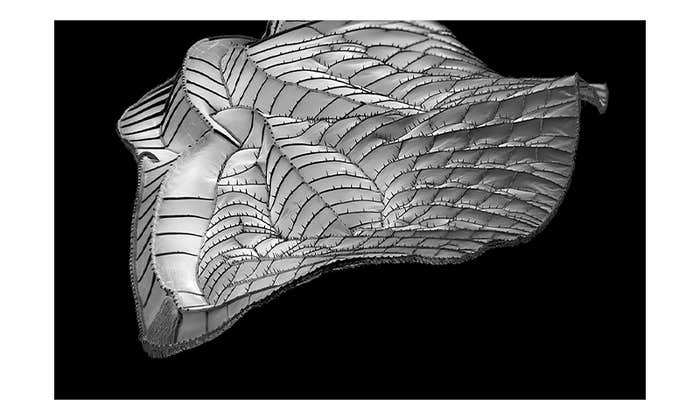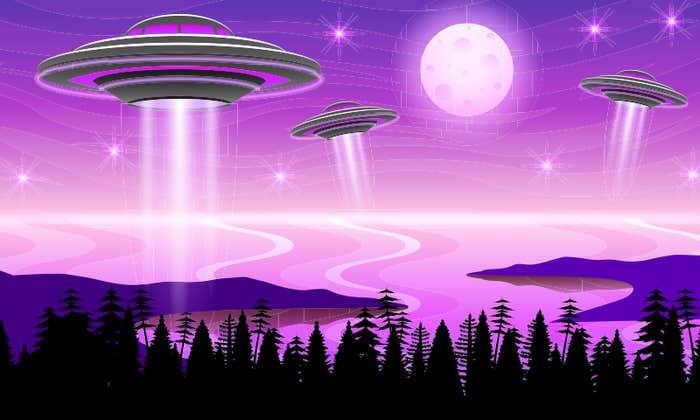I had little idea of what I would discover when I set out to find and photograph the oldest living things in the world. I expected that researching, traveling, and photographing would stretch my perspective, and force me to learn a lot of science: biology, genetics, chemistry, geology, and so on. But what I didn’t expect to learn was that sometimes the right person for a scientific endeavor is an artist.
The Oldest Living Things project was motivated not by a narrow interest or a traditional scientific question, but by the idea of something called deep time. Deep time is not a precise demarcation in the way that geologic eras and cosmological epochs are. Rather, it’s a framework in which to consider timescales too long for our shallow, physical experience, and too big for our brains to process meaningfully. And why should they be able to? The earliest modern humans had a life expectancy of around 32 years. What evolutionary need would they have had to comprehend what 10,000 years felt like? What I wanted to do was to find or forge something relatable, something to help process and internalize deep time in a meaningful way: to feel expanses of time that we were not designed to feel.
It hadn’t occurred to me that scientists might declare themselves unqualified for such a broad project.
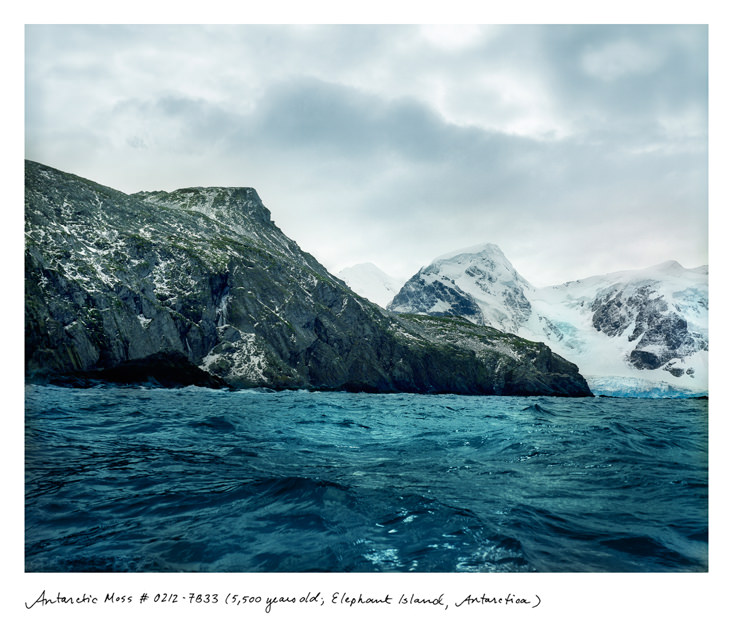
When I first had my “light bulb” moment conceiving the Oldest Living Things—which I would eventually publish as a book in 2014—I thought I would find an evolutionary biologist to partner with me. After all, I was an artist with a background in photography whose highest science qualification was 11th-grade physics. It hadn’t occurred to me that scientists might declare themselves unqualified for such a broad project.
After a meeting in September of 2006 with an Assistant Curator at the New York Botanical Garden in the Bronx, I realized that the Oldest Living Things was, in a sense, at odds with scientific specialization. A bryologist might spend his or her career studying one species of moss, or even a single feature or genetic mutation of that moss. In comparison, by the time I’d finished the project, I’d researched two domains, three kingdoms, 12 classes, 21 orders, 31 families, and 39 species of living things, studied by mycologists, bryologists, astrobiologists, marine biologists, dendrochronologists, and climatologists, to name but a few. And while there are many studies on cell aging and death, there is not an established area of study that looks at longevity across species per se. So instead of partnering with a scientific overseer, I was going to have to step into that role myself.
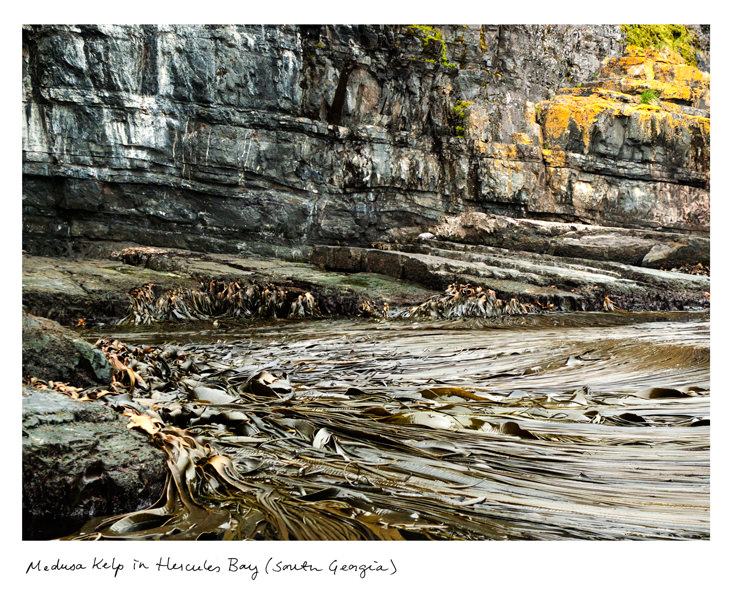
My first task was to begin to curate a collection of organisms to photograph, each a minimum of 2,000 years of age. However, aside from some helpful old-tree lists, there was no such compendium of ancient lives already in existence. This in itself spoke to the fact that I was wandering outside the lines of traditional scientific methodologies. A lot of creative Google searching ensued, as well as reading published scientific research papers and reaching out to authors. The list changed and grew over the years, with new organisms being added even as the book went to print. “New” old organisms were discovered during that time, such as the Siberian Actinobacteria, and others had their ages downgraded, as was the case when the 13,000-year-old box huckleberry in Pennsylvania lost about 5,000 years with the insight of updated glaciation data.
To qualify for inclusion, each organism must have gone through at least 2,000 years of continuous life as an individual. I selected 2,000 years as my minimum age specifically to draw attention to the gentleman’s agreement of what “year zero” means. In other words, 2,000 years serves both as an all-too-human start date, as well as the baseline age of my subjects. The requirement of endurance on an individual level was an important consideration, because we all innately relate to the idea of self. This was a purposeful anthropomorphization that would further imbue the organisms with a reflective quality in which we could glimpse ourselves.
But once I started digging into the science, things were not so tidy. While unitary organisms such as a single tree are not hard to keep a handle on, things like “clonal colonies” are trickier. Sometimes referred to as “vegetative growth” or “self-propagating,” these individuals are able to generate new clones of themselves, as opposed to reproducing sexually like flowering plants do. They create new shoots, stems, or roots without the introduction of new outside genetic material, so that the new growth is genetically identical to—and part of—the original organism. This process can continue indefinitely, or for as long as the environment allows. This is what is meant when it’s said that clones are theoretically immortal.
If I were a scientist, grouping unitary and clonal organisms together under the umbrella of “continuously living” would likely raise eyebrows, as this is simply too wide a view to produce a clean outcome. But this idiosyncratic taxonomy is something that I chose to do as an artist, leading to an idiosyncratic taxonomy. Collectively, its members live in some of the world’s harshest conditions, uniquely adapted to extreme temperatures, low moisture and nutrient availability, and high altitudes that would leave others bereft. Many, instead of exhibiting fast or robust growth, exhibit quite the opposite: slow and steady. They gracefully weather adversity, bear witness to long expanses of time, and make the most of difficult situations. As a result, we can’t help but infuse this ancient crew with sought-after human traits like patience and wisdom.
Continents are drifting away from one another faster than that.
Over the years I packed up my medium-format film camera again and again, eventually landing on every continent, as I went searching for 5,500-year-old moss in Antarctica, a 2,000-year-old brain coral in Tobago, an 80,000-year-old Aspen colony in Utah, a 2,000-year-old primitive Welwitschia in Namibia, and a 43,600-year-old shrub in Tasmania that’s the last of its kind on the planet, to name but a few. Scientists were more than willing to support my cause. I was sometimes invited to join them on their fieldwork expeditions, such as hunting lichens in Greenland or scuba diving amidst the seagrass meadows stretching between two Spanish Mediterranean islands. Sometimes they agreed to meet me on site and guide me to their subjects: the Palmer’s Oak in Riverside, California, the Baobab trees of South Africa, and the alien-looking llareta in Chile.
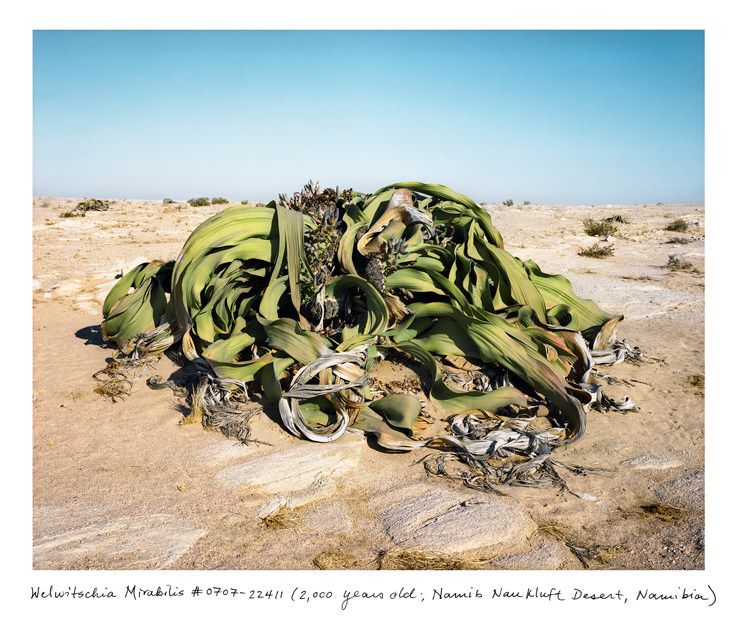
Other times I was sent maps and directions and GPS coordinates and sent out on my own. Once I was handed a branch snapped off of a propagated sapling in a research garden by a conservation biologist, who instructed me to match the leaf shape with that of the clonal eucalyptus I was in search of. I set out from Perth and drove south a few hours in search of the more than 6,000-year-old Meelup Mallee, which survived a road bulldozed through its center and nearly succumbed to a parking lot before its importance was discovered, just in the nick of time. Guided by roadside markers and the relocated parking area, I took out the branch and dodged through thorny underbrush in the unremitting midday sun in search of my tree. Eventually I found a match to the leaf shape and structure—the Meelup Mallee stood just where I was told to look for it.
Finally, there were times when there was no scientific connection to be made and I had to depend on cultural signposts. In Sicily, I learned of a legend describing how a queen got caught in a severe thunderstorm en route to Mount Etna. She and 100 of her knights—and, presumably, their horses—all took shelter under the expansive canopy of a certain chestnut tree sometime between 1035 and 1715. The so-called Chestnut of 100 Horses has pride of place in the community, and has long been protected by a fence after a gentleman attempted to grill sausages inside the tree and nearly burnt it down. I heard that story directly from the gatekeeper, Alfio, who allowed me enter on my visits to the site in 2010 and 2012. Likewise, on Crete, Sicily’s Mediterranean neighbor, an ancient olive keeps the town of Ano Vouves on the map. Branches are still culled from it to make wreathes to adorn the winning athletes at the Olympics. The tree is hollow, so it cannot be cored, but if the tree is in fact the 3,000 years it’s claimed to be, it would have already been 200 years old at the time of the first Games in Greece, in 776 B.C.E.
Over the years, I discovered much that was beyond imagination. My favorite statistic in the whole project came from map lichens (Rhizocarpon geographicum) in Greenland that grow only one centimeter every 100 years—something both perfectly relatable and utterly foreign. Continents are drifting away from one another faster than that. Then there were the stromatolites in Western Australia, bound cyanobacteria combined with non-living sediments, allowing them to straddle biologic and geologic classification. Some were shaped into strangely bulbous forms, and others flat expanses of microbial mats. Some were above water, and others under it. They are understood to be among the earliest living organisms on Earth, and also just so happened to oxygenate our atmosphere, setting the stage for all life to come. It took 900 million years.
Why is it year “2015” right now? A curious choice for a 4.5 billion-year-old planet.
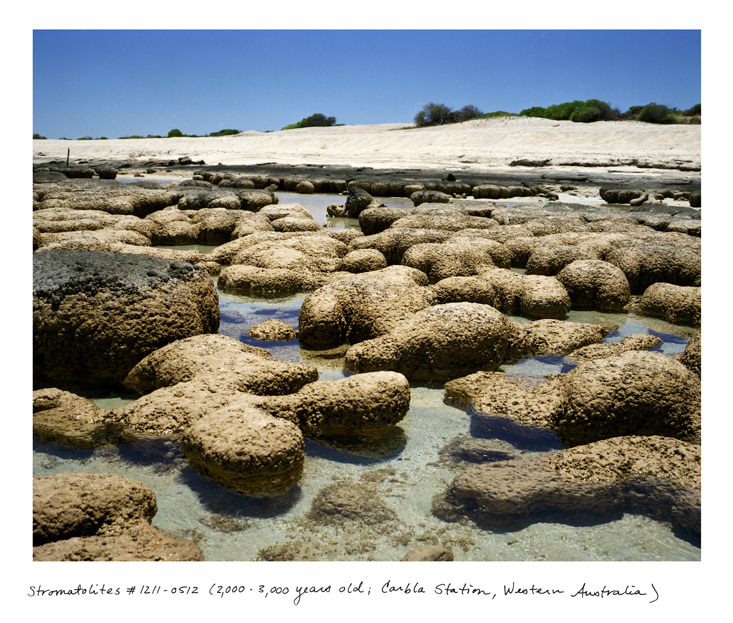
In some respects, what I was doing was not far from science. I was exploring and recording the world, and relying on the help of scientists and their tools and data. But my goals were also not solely—or even primarily—scientific. The Oldest Living Things is an eccentric archive and time capsule, constructed across disciplines, and at its heart a conceptual art project.
I also financed it on my own. While curiosity and experimentation define the work of both artists and scientists, the money comes from different places. I have yet to encounter a wholly independent scientist, conducting research without institutional funding, whereas there are very few fully—or even partially—supported artists. As for me, I couldn’t not do the work, despite the fact that it came at great personal expense. I racked up credit card debt and student loans from an ill-fated foray into a Ph.D. program, bartered artwork for foreign travel immunizations and dentistry, accepted help from family, and borrowed money from friends.
One of my primary goals with this work was to create a little jolt of recognition at the shallowness of human timekeeping and the blink that is a human lifespan. Does our understanding of time have to be tethered to our physiological experience of it? I don’t think so. Deep time is like deep water: We are constantly brought back to the surface, pulled by the wants and needs of the moment. But like exercising any sort of muscle, the more we access deep time, the more easily accessible it becomes, and the more likely we are to engage in long-term thinking. The more we embrace long-term thinking, the more ethical our decision-making becomes. It is not the job of traditional science to interpret and translate its findings. Art, on the other hand, is a great mediator.
The dialogue with environmental conservation is a perfect example of the importance of blending art, science, and long-term thinking. Our eyes might glaze over at reading about CO2 levels at 400+ parts per million, as vital as that statistic is, because it is so hard to relate to such an abstraction. But take, for example, the 9,550-year-old spruce tree on a high mountain plateau in Sweden. For the first 9,500 years of its life it lived as a shrubby mass of branches, close to the ground. But around 50 years ago, a tall and spindly center trunk shot up: a direct effect of a warming climate. It is, in essence, a portrait of climate change. Perhaps by visualizing such impacts, by anthropomorphizing these ancient lives and activating the science that tells their stories through an artistic lens, we might engage more readily in the long-term thinking required to extend their lives, and by proxy, our own.
Engagement with the sciences is part of how I measure the impact of the Oldest Living Things as well. Recently, a scientist that I’ve never met sent me an email saying that after reading my book, he is now approaching his work with a different, more open mindset. To me, that indicates something has been set into motion. After all, meaning is not made of lone facts, lone people, or lone disciplines, nor is it found in the valuing of the objective over the subjective. Rather, meaning comes by way of knitting together a bigger picture, filled with color and texture, and meant to be felt and understood. We most fully understand what we can internalize—that which becomes part of us. The importance of specializing can’t be discarded, but working only within one discipline and strictly adhering to its rules is likely only to generate one kind of work, one kind of result.
We very well might end up missing the forest for the trees.
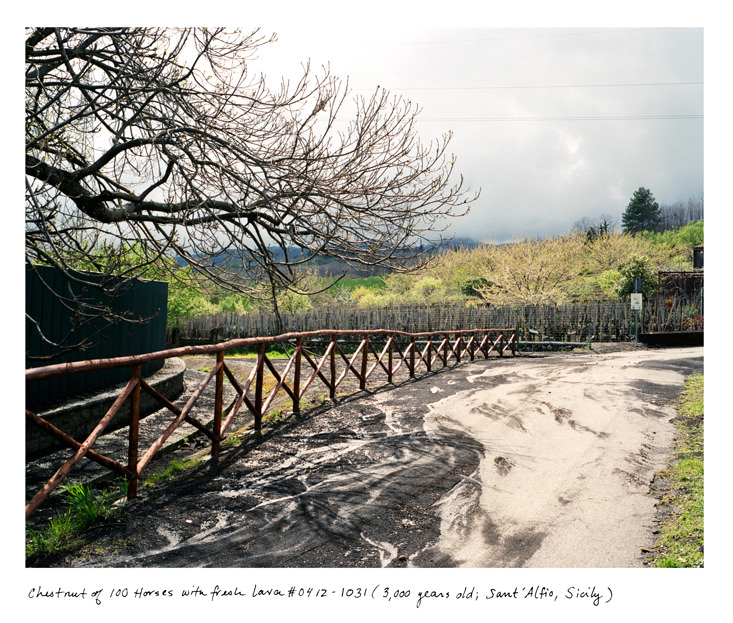
Rachel Sussman is a contemporary artist and author of The New York Times Bestseller The Oldest Living Things in the World. She is a Guggenheim, NYFA, and MacDowell Colony Fellow, TED speaker, and a member of Al Gore’s Climate Reality Leadership Corps.
Portions of this text originally appeared in Rachel’s book, The Oldest Living Things in the World.




























